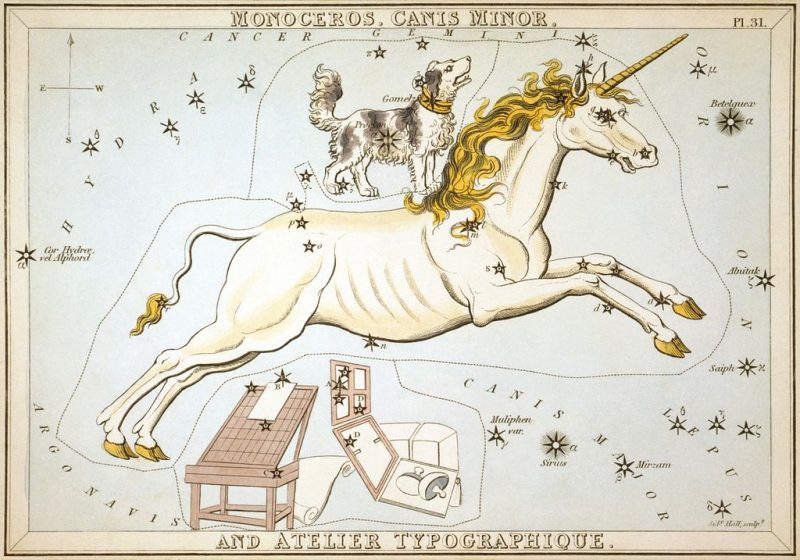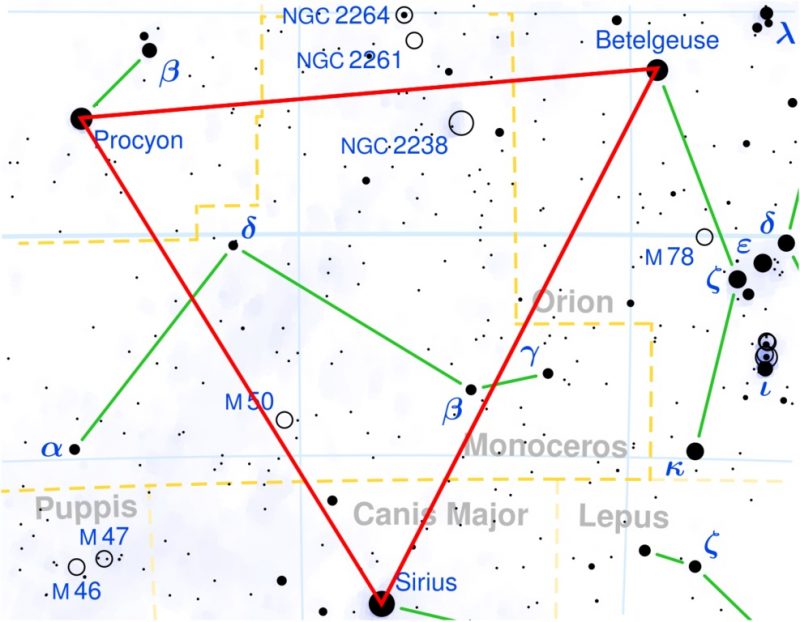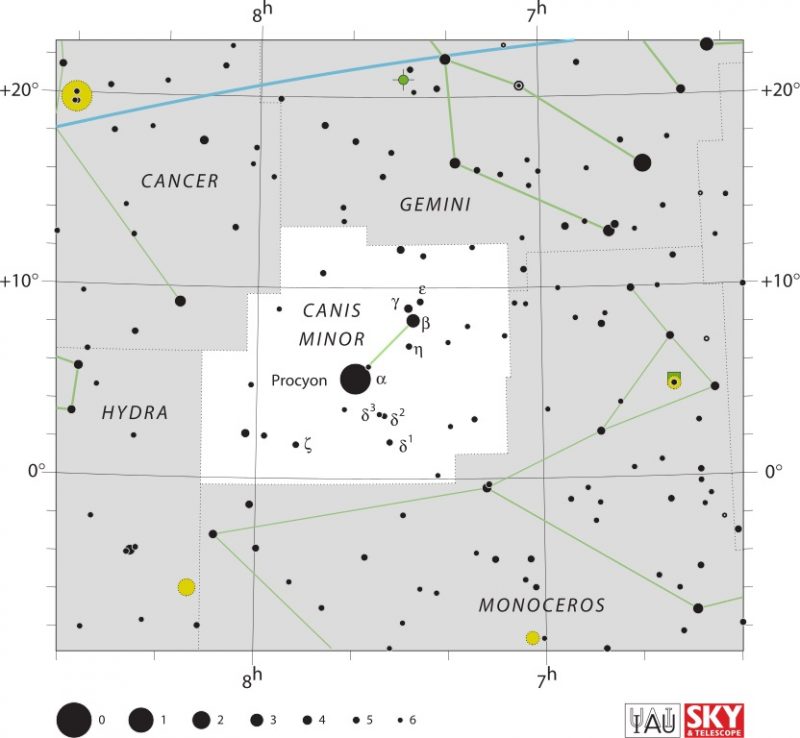
Canis Minor the Lesser or Little Dog is a small constellation, but it has a major star. It’s home to the 8th-brightest star in all the sky, called Procyon or Alpha Canis Minoris. This star is also one of the six stars in the noticeable Winter Circle asterism.
The companion constellation to the Lesser Dog is, of course, nearby Canis Major, the Greater Dog. And Canis Major houses the brightest star in the sky, Sirius, which is also part of the Winter Circle.
Sirius is often called the Dog Star. And Procyon is known as the Little Dog Star.
The mythology of Canis Minor
Canis Minor and Canis Major are the faithful dogs of Orion the Hunter. They lie east of Orion and follow him up from the horizon in the Northern Hemisphere.
In one mythological story, the gods placed the Lesser Dog at the banks of the river of the Milky Way so it would never be thirsty.
English astronomer Richard Proctor tried to rename Canis Minor for a cat, Felis, to distinguish it from Canis Major.
Due to Canis Minor’s proximity to Monoceros the Unicorn, many illustrations depict the Lesser Dog so that is seems to be standing on the Unicorn’s back.

Finding the Lesser Dog
Canis Minor is easy to find in February and March. If you can find Orion, you can easily starhop your way to Canis Minor. If you’re in the Northern Hemisphere, Orion stands high above the southern horizon mid-evening. To its left, out from reddish Betelgeuse, is bright Procyon. You can spot even brighter Sirius to the lower right. These three stars make up the Winter Triangle.
From the Southern Hemisphere, Orion is standing on his head above the northern horizon and Canis Minor is to the right.

Stars of Canis Minor
While Canis Minor is not the smallest of the 88 constellations, it is one of the smaller ones, ranking 71st. The majority of the smallest constellations are in Southern Hemisphere skies.
This diminutive constellation has two stars of note. The first you’ve already met, Procyon, or the Little Dog Star, shines at magnitude 0.40. The temperature of Procyon – at 7,000 kelvin (6,700 Celsius or 12,000 Fahrenheit) – is similar to that of the sun. But unlike the sun, it has a stellar companion, a hard-to-see white dwarf which requires a large telescope. Procyon appears bright to us on Earth because it’s a mere 11.4 light-years away.
The other bright star in Canis Minor is Gomeisa, or Beta Canis Minoris. Gomeisa shines at a magnitude 2.89. Gomeisa lies a much more distant 170 light-years away.

Part of the Winter Triangle and Circle
Bright Procyon gets incorporated into two important winter asterisms: the Winter Triangle and Winter Circle or Hexagon. Starting at the bottom of the Winter Circle with the brightest star, Sirius, the other stars in the Circle are Procyon, Pollux (and it twin, Castor), Capella, Aldebaran and Rigel. The Winter Triangle is like a slice of a pie taken out of the Winter Circle. It includes Sirius and Procyon plus Orion’s reddish Betelgeuse.

Deep-sky targets in Canis Minor
Also, a number of galaxies and nebulae lie in Canis Minor, but the majority are too faint for the casual amateur astronomer. In fact, the brightest of these is only 13th magnitude, the spiral galaxy NGC 2485. Because our own Milky Way lies in the southwest portion of the constellation, the faint galaxies that you will find all lie in the northeast portion of Canis Minor’s boundaries. You can think of the line drawn between Procyon and Gomeisa as the border of the Milky Way.
Bottom line: Canis Minor is a small constellation with one notably bright star, Procyon. The constellation of the Lesser Dog follows Orion across the sky.











